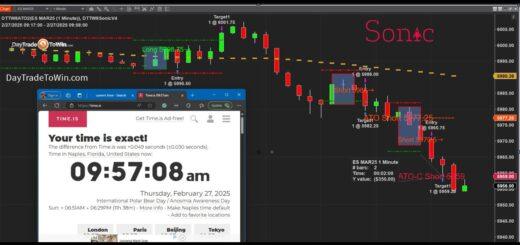Price Action Mastery: Advanced Techniques for Seasoned Traders
Today, I aim to delve into an educational discussion centered on price action. Understanding price action is pivotal for foreseeing the type of trading day ahead and making well-informed decisions, regardless of whether you’re trading the E-mini S&P, Dow, Nasdaq, currencies like the Euro or Australian Dollar, or commodities like crude oil. The principles of price action remain universally applicable.
Risk Disclaimer: Before delving into our discussion, let’s reiterate a crucial point: Trading inherently carries risks. Never invest funds beyond your means, and always consult your broker to fully comprehend the risks involved.
Price Action Basics: Price action analysis involves scrutinizing raw price movements on a chart to inform trading decisions. It revolves around comprehending market dynamics and interpreting price movements without leaning on indicators or intricate tools.
Identifying Market Types: A key aspect of mastering price action is discerning different market conditions, notably distinguishing between trending days and choppy, range-bound days.
- Trending Days: These days are characterized by robust, sustained price movements with minimal retracements. Volatility tends to be higher, making them conducive to trend-following strategies.
- Choppy Days: Conversely, choppy days witness prices fluctuating within a range, frequently touching support and resistance levels without a clear direction. While challenging for trend-following strategies, they may present opportunities for range-bound or scalping approaches.
The ABC Strategy: Now, let’s explore a simple yet effective strategy for identifying and navigating various market conditions: the ABC strategy.
- A Part of the Day: This encompasses the initial two and a half hours of trading, where initial market sentiment takes shape.
- B Part of the Day: Following that, we enter a subsequent period where we observe whether the market breaks above or below the range established during the A part.
- C Part of the Day: This final phase involves anticipating late-day rallies or sell-offs based on earlier price action.
Implementing the Strategy: Here’s how to put the ABC strategy into practice:
- During the A part, monitor the market’s initial movements and establish the trading range.
- In the B part, watch for decisive breaks above or below the A range, signaling potential trend formation.
- Utilize closing prices and confirmatory signals to enter trades aligned with prevailing market conditions.
- Manage trades accordingly, adjusting stop-loss and take-profit levels based on evolving price action.
Real-Life Examples: Let’s scrutinize recent market sessions to illustrate the ABC strategy in action. By dissecting past price action, we can better grasp how to apply this approach to future trades.
Conclusion: Mastering price action is crucial for any trader striving for consistent success in the markets. By understanding market types and employing strategies like the ABC method, traders can adapt to varying conditions and make informed decisions. Remember, successful trading demands patience, discipline, and continuous learning.
If you’re new to day trading or seeking to refine your skills, consider joining our mentorship program at DayTradeToWin.com. Our comprehensive approach revolves around price action fundamentals and offers valuable resources to help you thrive in the markets.
Happy trading!




